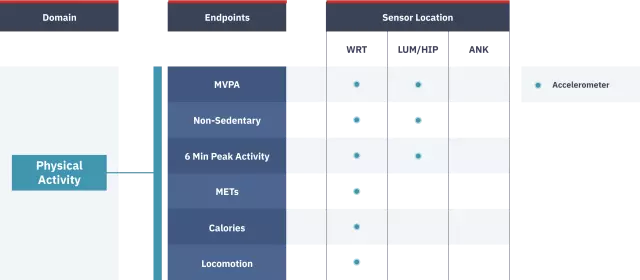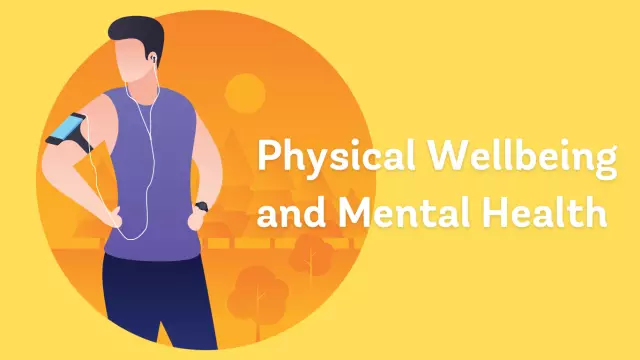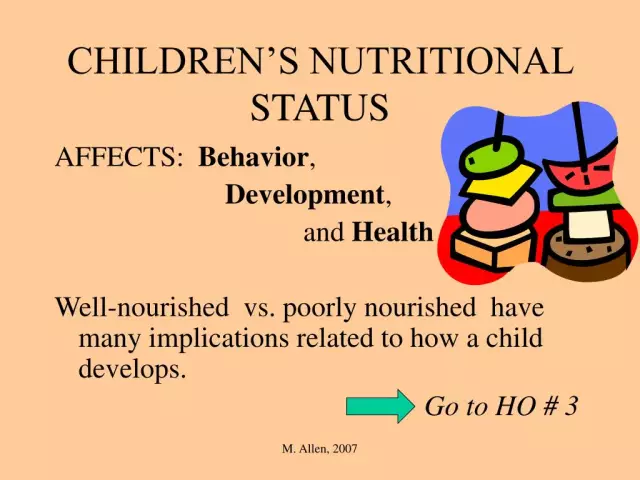- Author Rachel Wainwright [email protected].
- Public 2023-12-15 07:39.
- Last modified 2025-11-02 20:14.
Hypodynamia
The content of the article:
- Causes and risk factors
- Forms of hypodynamia
- Symptoms of hypodynamia
- Features of the course of hypodynamia in children
- Diagnostics
- Treatment
- Possible complications and consequences of physical inactivity
- Forecast
- Prevention of hypodynamia
Hypodynamia (lack of mobility) is a pathological condition that develops with a significant restriction of physical activity and leads to disruption of the functions of the musculoskeletal system, cardiovascular system, gastrointestinal and respiratory tract, etc.

Source: simptomer.ru
Mobility is a natural property of a person, which lies in his ability to carry out vigorous activity. The main functions of physical activity are:
- maintaining homeostasis;
- maintenance of muscle tone, blood vessels, and with them the normal functioning of the body;
- development of individual abilities and properties;
- achievement of a high effect of motor activity (sports, labor skills).
As a result of technological progress since the beginning of the last century, the share of physical labor in human life has decreased by 150-200 times. At the same time, mortality from cardiovascular pathologies increased by about 6 times. The prevalence of physical inactivity is increasing due to urbanization, mechanization and automation of labor activity and everyday life, an increase in the role of means of communication in modern society. According to some studies, an increase in physical activity leads to a decrease in the incidence of disease by about 45%.
Causes and risk factors
Physical inactivity can be caused by objective reasons, for example, disability, severe and prolonged illness. But in most cases, it is associated with improper lifestyle organization or sedentary work.
The main risk factors for the development of hypodynamia include:
- insufficient physical activity;
- overweight;
- psychological disorders;
- somatic diseases;
- genetic factors;
- intrauterine fetal hypoxia;
- birth trauma;
- bad habits.
Forms of hypodynamia
There are the following main forms of hypodynamia:
- hypoergy - lack of total range of motion and their number;
- hypokinesia - lack of variety of movements;
- hypotension - a lack of quality of movements and their intensity.
Symptoms of hypodynamia
Symptoms of hypodynamia appear gradually. These include increasing fatigue, rapid fatigue, decreased performance, sleep disturbances, increased unreasonable nervousness, regular headaches of varying intensity, increased risk of fractures, weight gain, shortness of breath with little physical exertion, back pain. Women can develop anorgasmia, men - erectile dysfunction.
Due to insufficient physical activity, strength indicators decrease, muscle volume and mass are reduced, neuro-reflex connections are disrupted, which can lead to the development of vegetative-vascular dystonia, depressive conditions. With a long course of the pathological process, bone mass gradually decreases, as a result of which the functions of the spine and joints are impaired. Due to the weakening of the ligamentous apparatus, intervertebral hernias occur. In patients with physical inactivity, as a rule, there is an increase in heart rate both during physical exertion and at rest, as well as an increase in blood pressure.

Source: simptomer.ru
Features of the course of hypodynamia in children
Physical inactivity in children can be manifested by drowsiness, lethargy, decreased mental abilities, delayed physical development, obesity, refusal to communicate and play with other children, low school performance, and the development of mental disorders.
Diagnostics
Diagnostics of hypodynamia is based on data obtained during the collection of complaints and anamnesis. In order to find out the severity of the complications that have developed, they resort to an objective examination of the patient, as well as instrumental (X-ray examination, ultrasound diagnostics, computed tomography, etc.) and laboratory (general blood and urine analysis, biochemical blood analysis, etc.) studies, the volume of which is determined by the existing pathology.
Treatment
With hypodynamia, which developed against the background of a somatic disease, first of all, treatment of the underlying pathological process is required. It is also necessary to eliminate the unfavorable factors that contributed to the development of hypodynamia.
Correction of a pathological condition, in addition to a gradual increase in physical activity, includes physiotherapy methods, massage, diet therapy. To restore the functions of organs and body systems in case of hypodynamia, it is recommended:
- physiotherapy exercises - you should start with it, especially with physical inactivity that has developed against the background of somatic diseases;
- aerobic physical activity (brisk walking, running, badminton, tennis, skiing);
- strength exercises;
- stretching exercises for muscles and ligaments.
In case of physical inactivity, which has developed against the background of psychological problems, it is recommended to work with a psychologist or psychotherapist. Children, as well as adults, are encouraged to play outdoors, play sports or dance, and tourism.
Possible complications and consequences of physical inactivity
Among the main consequences of hypodynamia are muscle atrophy, impaired coordination of movements, myofascial syndromes, osteoporosis, osteoarthritis, osteochondrosis, metabolic disorders, arterial hypertension, ischemic heart disease, gastrointestinal tract disorders, chronic obstructive pulmonary disease, obesity, atherosclerosis, insulin resistance. These pathological conditions lead to a decrease in life expectancy.
Forecast
With timely measures taken, the prognosis is favorable, most of the pathological changes caused by hypodynamia due to an unhealthy lifestyle are reversible.
Prevention of hypodynamia
The main measures for the prevention of hypodynamia include:
- sufficient physical activity;
- long walks in the fresh air;
- alternation of mental and physical activity;
- timely treatment of somatic diseases;
- correction of excess weight;
- balanced diet;
- rejection of bad habits.

YouTube video related to the article:

Anna Aksenova Medical journalist About the author
Education: 2004-2007 "First Kiev Medical College" specialty "Laboratory Diagnostics".
The information is generalized and provided for informational purposes only. At the first sign of illness, see your doctor. Self-medication is hazardous to health!






